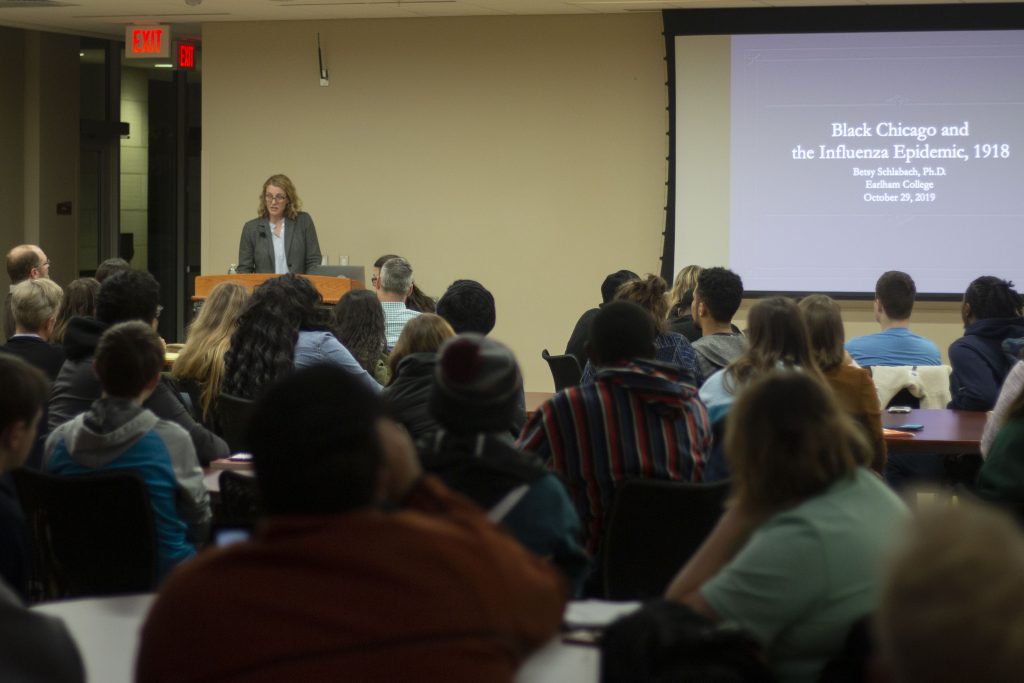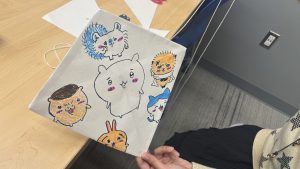
The year is 1918, and one factor has heated Chicago’s racial tensions to a fever pitch — and inspired equally intense opposition.
That factor? One of the deadliest epidemics in human history.
Students and faculty packed into Westlake Hall this past Tuesday to hear Betsy Schlabach speak on how the 1918 influenza epidemic affected Chicago’s African American communities from a health-based perspective.
As Schlabach, associate professor of history at Earlham College, explained, the most significant effect of the epidemic on African-Americans was the role of racism.
At the time, Schlabach said, predominantly white newspapers controlled public information about African-Americans. Journalists were contradicted by reality in ways including their below-expected death rates which disproved the paranoia surrounding them being “biologically inferior disease carriers.”
Future studies that downplayed or ignored segregation’s influence on the community’s poor living conditions minimized the racial subtext of the times. The inaction of public health authorities did this as well.
“I argue Chicago had an elaborate but unnamed system of Jim Crow laws,” Schlabach said.
African-Americans responded in proactive ways, including advancements in fashion with women creating fashionable “flu veils.” They also traveled locally and nationally to compete in track and field championships.
The most substantial change came from protests for desegregation in medical care and training that resulted in increases in opportunity for African-American healthcare professionals in the following year.
The structure of Schlabach’s presentation enabled her to highlight the African-American community’s experience in conflict and response to it as the central aspect of her recounting of the 1918 epidemic. She explained how such patterns echo into the modern day.
Schlabach notably took inspiration for her research from her backgrounds in African-American studies and history, wanting to find the historical situation-response patterns behind recent National Institute of Health reports stating that people of color are more likely to die of illness than white people.
“That seems like the greatest injustice to me,” she said. “It’s through these stories [that] one learns of those who fought to break color lines … and refused to accept anything that looked like segregation.”
According to Rob Hawkins, director of Bradley’s African- American studies, the event was one of several from this year’s Armstrong Lectures, which “bring interesting, provocative, and expert speakers to campus to offer new perspectives on the past and the present.”
Attendees agreed that the lecture helped draw attention to the same issues in the present.
“Understanding the history of racism in … the history of Chicago continues to be very important in understanding where we were, where we are now, and where we’re going,” Bradford Brown, associate history professor, said.
Following the presentation, Schlabach offered a final word to the student body:
“Health and medicine is not a race-neutral field. There’s a lot of work to be done and students … can be empowered to change that … People’s lives literally depend on it.”




